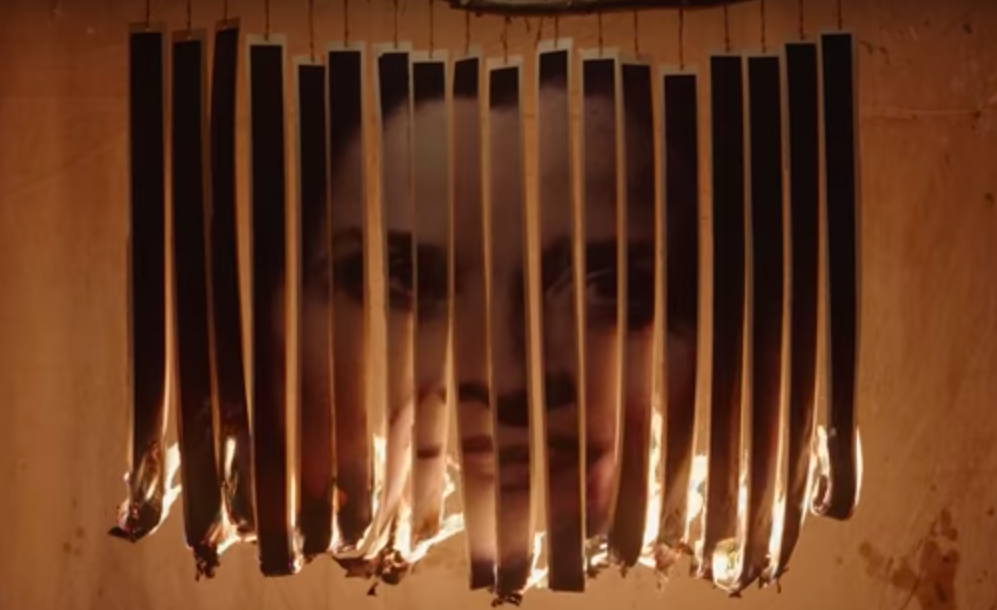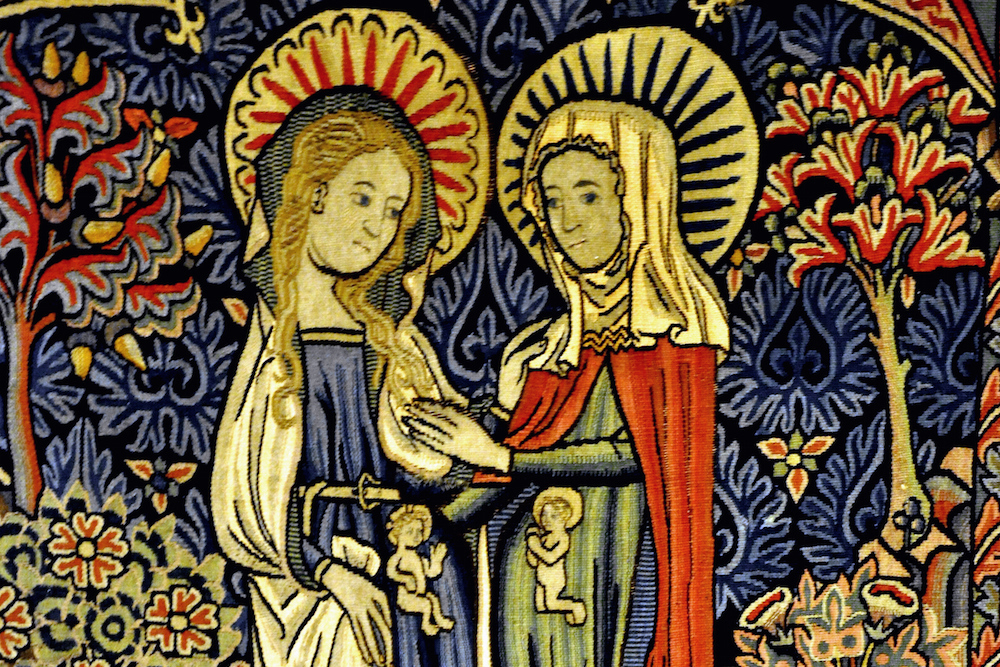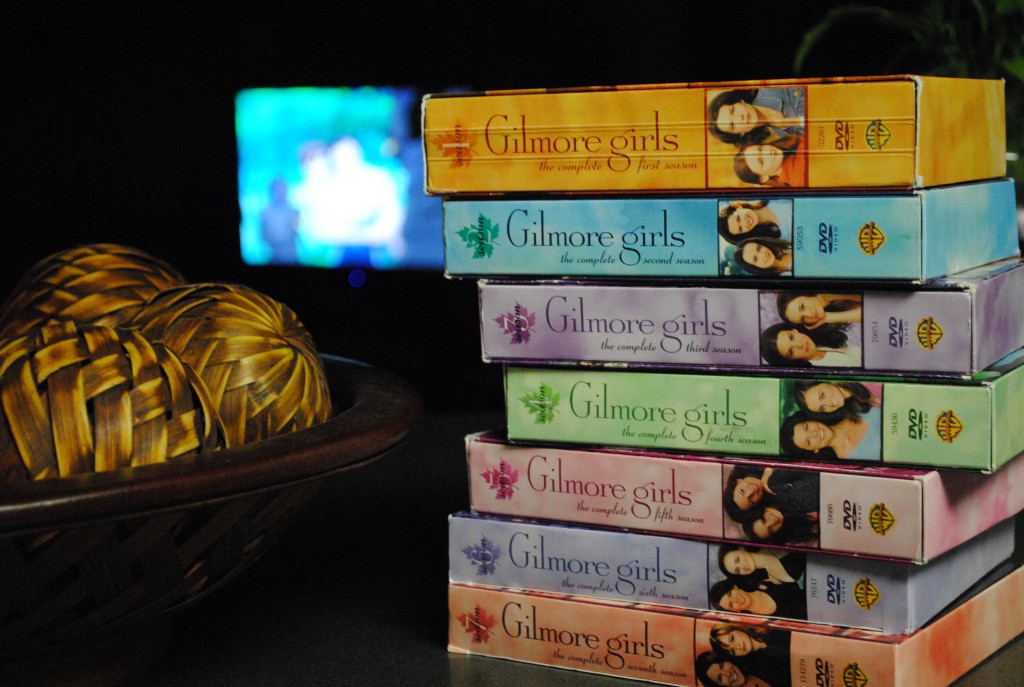Books & Culture
“Little Fires Everywhere” Asks Whether Art—Or Parenthood—Is Theft
The Hulu adaptation of Celeste Ng's novel wrestles with questions of appropriation, in art and life

If you’re going to adapt a book to the screen, I’m a fan of the limited series. It gives the story room to develop echoes and reflections between characters and events, a luxury that two-hour films often don’t allow. For these reasons, the series approach is a benefit for the Hulu adaptation of Celeste Ng’s New York Times best-selling Little Fires Everywhere, which is very much about those creative reiterations and alterations.
The series reflects on how art (not unlike adaptation) borrows, quotes, references, pays homage to, creates a pastiche of, appropriates, plagiarizes, samples, or steals from others’ work. The story’s central artist, Mia Warren (Kerry Washington), however, critiques art that is too focused on appropriation—the artistic concept of taking from others—without much creativity of its own. Mia states, not surprisingly, by quoting her teacher Pauline (Anika Noni Rose) that “art should either bring something new into the world or something strange and familiar and terrifying. Or at the very least uncomfortable.” She is saying that art should make something new and unsettling while acknowledging what it takes from others.
When does adaptation and intertextuality become stealing? To whom does the art object finally belong?
But when does adaptation and intertextuality become stealing? To whom does the art object finally belong? And to what extent is anything we “make” truly ours? In Little Fires Everywhere, adaptive art can be a means to establish a larger conversation, to see another’s perspective, and to reject the myth of the self-made and self-sufficient person who has earned the right of sole dominion over something or someone else.
The narrative follows the nomadic artist Mia when she moves with her daughter Pearl into the affluent planned community of Shaker Heights, Ohio in 1997. Their arrival shakes things up for another family, the Richardsons: mother Elena (Reese Witherspoon), father Bill, and their four teenaged children Lexie, Trip, Moody, and Izzy. Broadly, the story considers the power dynamics created by race, class, gender, and sexuality, particularly in the failures of characters to see outside of themselves, resulting in their judging others based solely on their own experiences. The story eventually turns to the issues of a cross-racial adoption case as well as the question of parental “ownership.” But it begins in the art.
Cinephiles will perceive a layered artistic repetition in the first shots of the series. As viewers watch a stately home burn to the ground, we see the echoes of another famous book turned movie—Daphne Du Maurier’s Rebecca, cinematized by Alfred Hitchcock. Viewers may also recall that that narrative, like this one, is told in retrospect. In both cases, the house has burned down and now we must return to it in its prime to see why we have ended where we have. As another female-focused narrative where the growing distrust between women and issues of class consume everything, this reference establishes some of the interpretative context for the narrative.
After this opening flash-forward, the inciting narrative event—Mia’s arrival in Shaker Heights—constitutes another cinematic repetition. The Stepford Wives, a classic book by Ira Levin turned feminist film directed by Bryan Forbes, also focuses on an artistic photographer who has left the city for rule-bound suburbia where the women embody some “idealized” sense of womanhood and domesticity. While this more reality-based rendering with book clubs and pre-packed lunches does not reveal the women to be controlled by men as directly, we do see how Mia, Elena, and their children continue to feel overwhelmed and conflicted about the patriarchal norms of heteronormative, white-dominant, family-centered life. Therefore, these establishing instances help to develop the overall emotional core of the story and its allusive history.
One area of referentiality that stands out because of this story’s adaptation onto the screen is the use of music from Tina Turner, Silver Convention, and Marvin Gaye to Alanis Morissette, Counting Crows, and Tupac Shakur. Although using popular music isn’t unusual for a soundtrack, some of the numbers are covers of the originals that should make the viewer a bit unsettled. The first episode ends with Union’s remake of Marcy Playground’s “Sex and Candy,” which dominates two crosscut scenes—one where Elena and her husband are having sex and one where Mia, in a nightmare, rides a subway car while being held by a woman who disappears, leaving Mia alone to receive the threatening gaze of a man who turns into Elena. This musical moment lets us see some of the hidden dimensions of our characters.
But while the original version of the song was a timely 1990s piece, this 2016 cover jumps the listener forward in musical time outside of the realism of the story itself. These moments are off-kilter—with Elena momentarily returning to a sexy, laid-back version of herself, and Mia in the terrifying dystopian space of a dream. Additionally, having a woman, Marie Hines, sing this dreamy, slow, and dark version of the song in our contemporary moment not only anachronistically unbinds the timeline, but it also unmoors the heterosexual narrative with one woman singing about another in sexualized ways: “and there she was / Like double cherry pie.” By using a cover, this piece of art is telling us something new about the story as well.
These musical references highlight the commonality of creative borrowing that is made plain in the story’s visual art examples, but it also brings up new questions. Mia makes her daughter a bicycle, which she likely took from the trash of her neighbors, and then covered in the Good Neighbors Guide. Pearl stitches a favorite quotation from Adrienne Rich into a t-shirt she wears. Izzy, the youngest Richardson and a budding artist herself, creates a collage of lesbian imagery that she cuts out from magazines, and she repurposes Cabbage Patch Kid dolls. They all bricolage the objects at hand as part of the regular creative process, making them anew.
These examples show that art regularly makes use of the work that has come before it, but Little Fires Everywhere also reveals the problems of such referencing in the storyline itself. When the story flashes back to Mia in art school, Mia criticizes the historical artist Richard Price’s re-photographing the images of others while talking to her teacher Pauline: “they’re not art. They’re derivative. He’s basically stealing.” Pauline questions her by restating, “You mean appropriating,” and adding, “You take things that don’t technically belong to you and put them in your art.” Although Mia certainly finds many ways to make her art her own, her teacher reminds her of the importance of acknowledging her sources and that no one is fully self-made.
This threat of appropriation that disregards its source crosses into plagiarism—using someone else’s words or ideas without acknowledgement—when Lexie Richardson steals an incident that happened to Pearl for her college application to Yale. In the essay, Lexie rewrites the classism and racism Pearl encountered when trying to be placed in an advanced math class, replacing those issues of race and class with the glass-ceiling of gender, and then claiming the experience as her own. It is one thing to take the objects of others, but it is quite another to appropriate their lived experiences, especially when you are already the one with power on your side. Lexie only sees this moment through her perspective as an opportunity for self-advancement instead of seeing how she has built her success on someone else.
These concerns about appropriation in art culminate in conflicts over the possession of children. Can parents own children like they own art?
These concerns about appropriation in art culminate in conflicts over the possession of children. Can parents own children like they own art? The story suggests that we see the children as a kind of art (kids are referred to as the new objects being brought into the world, just like the definition of art that Mia gives). Replacing objects with bodies, though, brings the benefits of totalizing parental authority into doubt. For instance, in the custody dispute attempts are made to buy the child as though she is a consumer good or an art object—a parallel made apparent by Mia’s sale of a famous photograph to pay for the custody hearings. This symbolic objectification produces a logic that focuses more on parental rights than on the child.
Issues about parental rights extend into all the major relationships. Mia talks about her right to take whatever pictures she likes of Pearl because, as she says, “she’s mine,” but this is part of an all-consuming urge of parenthood. Elena further exposes that dominating desire when she speak of wanting to eat her daughter like an apple, “seeds and all.” As with the relationships between the various mothers and their more mature daughters, attempts at total control only lead to disconnection. If appropriating art without acknowledgement is problematic, appropriating children holds even worse dangers because children are not just reflections of their parental “makers.” Instead, parents should shed their myth of being sole creator and acknowledge that children have multiple influences and should creatively shape themselves.
Although Little Fires Everywhere doesn’t give us all the answers, its layered artistry uses repetition to question our notions of possession. By focusing on women’s issues and community control based on privilege, the show reminds us of the importance of seeing outside the self, confronting the characters and the viewers with some of the dangers of claiming ownership of others’ bodies as if they were art. The show, like the art within it, is a pleasurable experience that also purposely brings discomfort with it. Its high drama doesn’t minimize a style that’s all its own. By incorporating musical covers, cinematic allusions, and highlighting the connection between children and art, the series pays attention to the multiple facets in the book while making something new as a work of art should.








